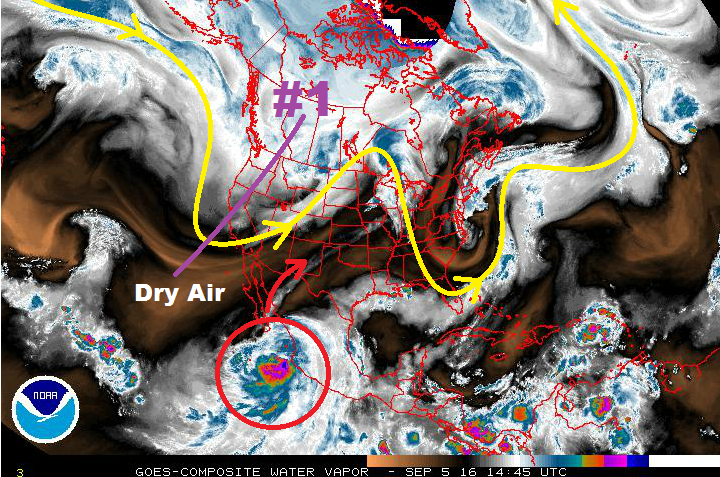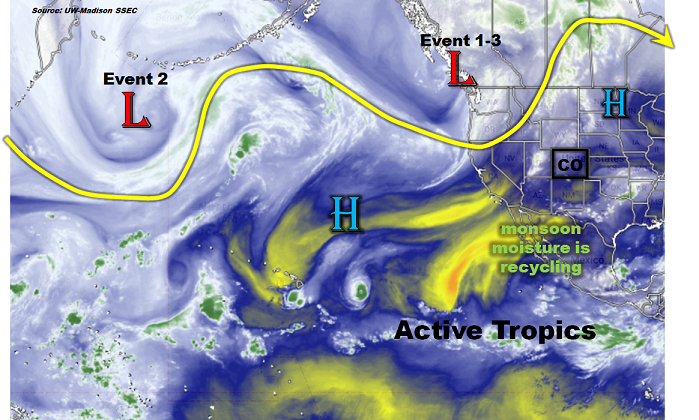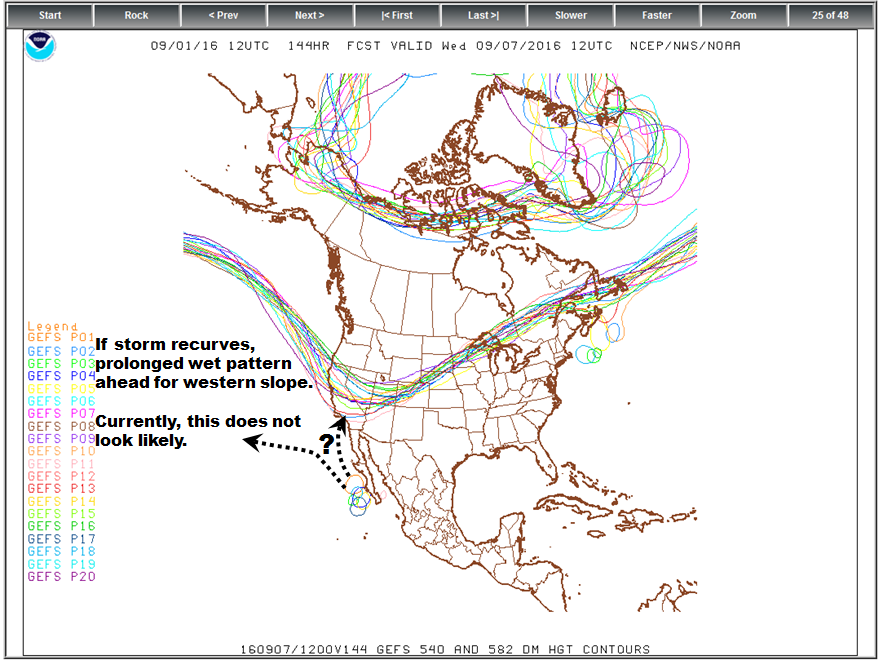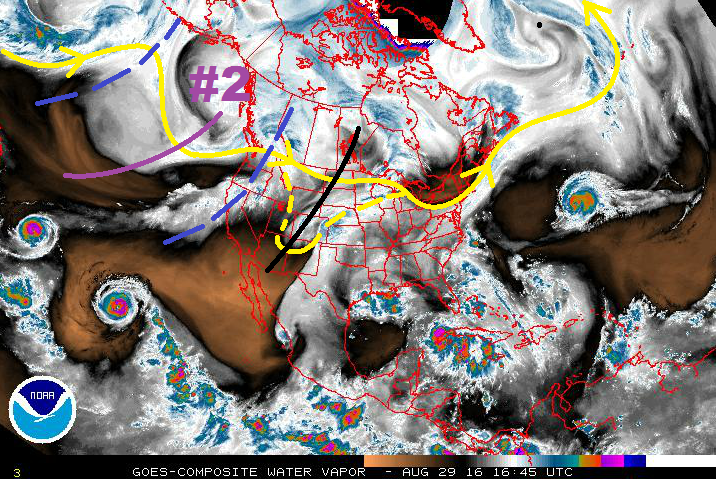 Issue Date: September 8th, 2016
Issue Date: September 8th, 2016
Issue Time: 1:30PM MDT
Valid Dates: September 9th through September 23rd
As we head into mid-September, it is certainly not uncommon to experience flood-capable rainfall anywhere the entire state. After all, atmospheric dynamics are more of a factor as the jet stream intensifies and shifts southward towards the mid-latitudes. However, the precious variable this time of year is moisture: even the most optimal dynamical setup cannot produce much of a flood threat if moisture is non-existent or marginal. Indeed, this is what we see on the large-scale water vapor image, below. A large trough with multiple embedded disturbances is centered over the Rocky Mountains. By itself, this could suggest an active weather pattern for Colorado. However, if we look farther southwest, we see that the Pacific moisture feed is non-existent as there is a wide swath of very dry air in the Pacific subtropics. This will limit short-term (1-4 days out) rainfall chances across Colorado and most of the southwest. The one exception to this is the remnants of the Tropical Storm Newton, but this moisture is racing off to the east and fortunately, will not impact our state.
The main feature of interest during this Flood Threat Outlook appears to be the large ridge that is seen in the eastern Pacific in the water vapor image. Analog based forecasts centered on 9/16 and 9/19 indicate that this feature will maintain its strength or intensify as is slowly progresses. As the 9/19 maps show, below, this feature will eventually string out to cover the entire northern US, though maximum centers of action will be over the northwest and northeast coasts. Because Colorado lies south of the ridge, it will still see some moisture return mainly in the form of northwest flow disturbances (cool fronts) though with limited rainfall chances. There is also strong indication that a cut-off low pressure system will develop over southern California. On its eastern periphery, south/southwest flow could promote short-term surges of monsoon moisture. However, the amount of moisture return looks marginal at best and flood threat-intensity rainfall is not expected. Overall, the forecasted pattern favors limited heavy rainfall chances mainly due to limited moisture. Nonetheless, we have identified two Events that are both associated with cold front passages. Due to their quick hitting nature, No Apparent Flood Threat is seen at this time.
Below we describe the details of the two Events.
Event #1: Monday (9/12)
No Apparent Flood Threat as a cold front sweeps through Colorado
A strong cool front will sweep into Colorado on Monday. As of right now, the timing of the front’s passage looks to coincide with peak heating, thus a round or two of thunderstorms will be possible mainly east of the Continental Divide. With rather limited moisture return in place before the front’s passage, only light to moderate rainfall amounts up to 0.75 inches are anticipated. Gusty winds and hail could accompany the stronger storms especially farther east towards the Kansas border. After its passage, expect much cooler weather with high temperatures up to 20F below normal especially east of the Continental Divide.
Event #2: Wednesday (9/14) through Friday (9/16)
No Apparent Flood Threat as the cut-off low should move east to support light to moderate rainfall
The cool down following Event #1 will be brief and by Wednesday, southerly flow will be back with temperatures near normal across the state. A cut-off low pressure system over California is expected to move east, with perhaps part of it splitting off and staying behind. Coinciding with this will be another cool front, not as strong as Event #1 that will sweep through Colorado. With enough moisture, rainfall chances will increase first over the southern part of the state, notably the San Juans on Wednesday where up to 0.5 inches of rain is possible. On Thursday and Friday, rain chances will spread northward with 0.25 to 0.75 inches of rainfall possible across large parts of the state. The highest chance for heavy rainfall appears to be in the Northeast Plains, which will have access to higher moisture and instability. Up to 1.25 inches of rainfall is possible there. However, these amounts are all below flood thresholds and an elevated flood threat is not warranted at this time.










